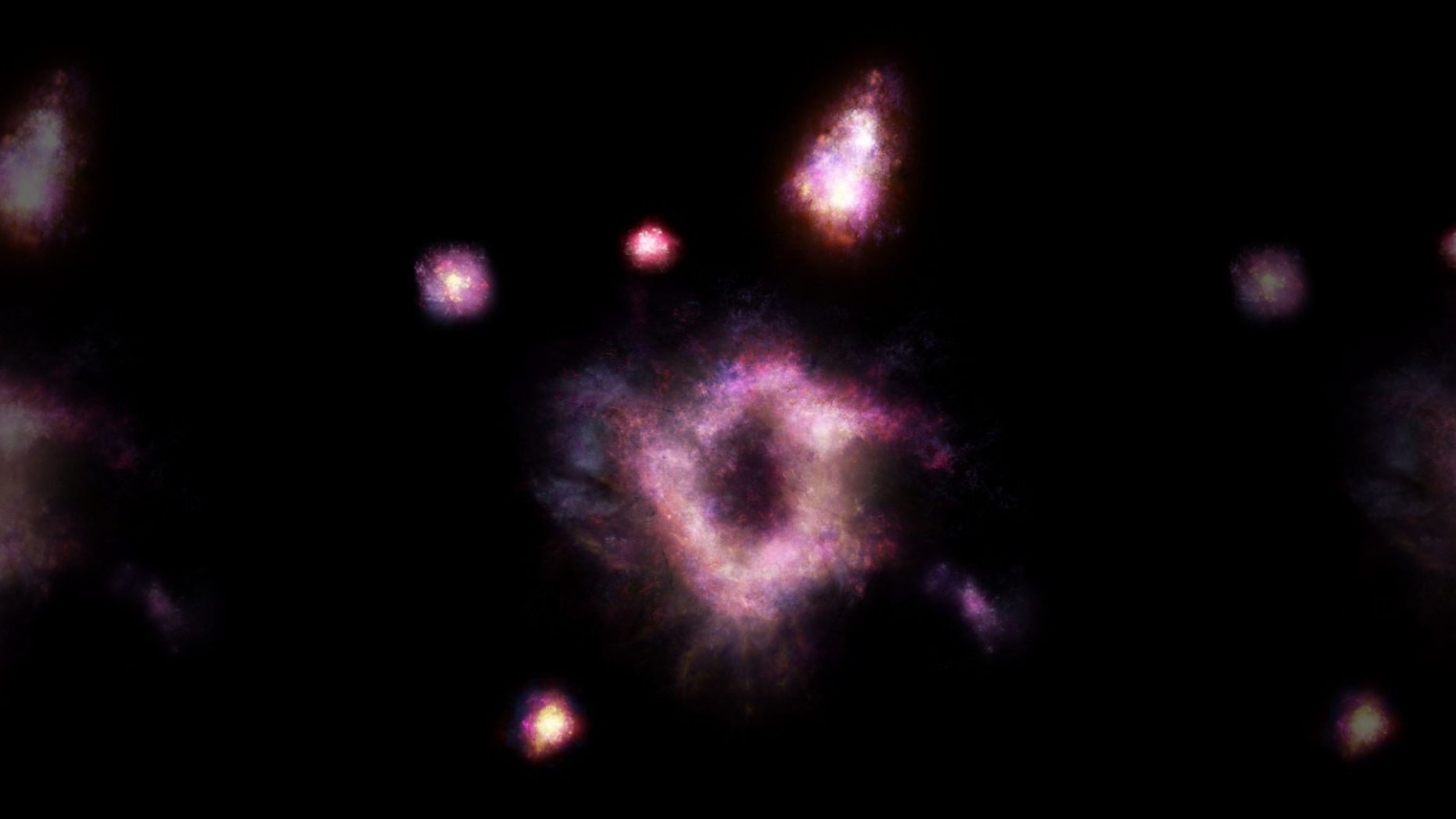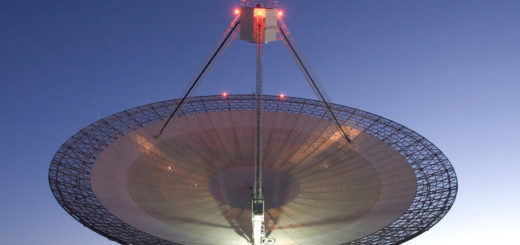Ring of fire’ galaxy discovered 11B light-years from Earth

Researchers have discovered a galaxy roughly the size of our Milky Way that’s being described as a “cosmic ring of fire.”
Known as R5519, the galaxy is 10.8 billion light-years from Earth. It’s also circular, similar in shape to a doughnut, the researchers noted in a statement.
“It is a very curious object that we’ve never seen before,” said lead researcher Dr. Tiantian Yuan in the statement. “It looks strange and familiar at the same time.”
An artist’s impression of the ring galaxy. (Credit: James Josephides, Swinburne Astronomy Productions)
An artist’s impression of the ring galaxy. (Credit: James Josephides, Swinburne Astronomy Productions)
MASSIVE, ROTATING DISK GALAXY FROM THE EARLY UNIVERSE DISCOVERED
R5519 was first observed by the WM Keck Observatory in Hawaii and NASA’s Hubble Space Telescope.
The astronomers noted R5519 is comprised of a ring of stars, known as a “collisional ring galaxy.” Given its age, it’s one of the first-ever located in the early universe. For comparison purposes, the universe itself is widely believed to be 13.8 billion years old.
As evidenced by its shape, it’s possible the galaxy got its shape after colliding with another object in the early universe, the researchers wrote in the study.
“The collisional formation of ring galaxies requires a thin disk to be present in the ‘victim’ galaxy before the collision occurs,” one of the study’s co-authors, Australian National University Professor Kenneth Freeman, explained.
MYSTERIOUS ‘CONTINUOUSLY ACTIVE’ OBJECT DISCOVERED IN JUPITER’S ORBIT
“In the case of this ring galaxy, we are looking back into the early universe by 11 billion years, into a time when thin disks were only just assembling,” Freeman added. “For comparison, the thin disk of our Milky Way began to come together only about nine billion years ago. This discovery is an indication that disk assembly in spiral galaxies occurred over a more extended period than previously thought.”
The study was published in the scientific journal Nature Astronomy.



 Creators of mankind
Creators of mankind Description of “Tall white aliens”
Description of “Tall white aliens” Where they came from?
Where they came from? About hostile civilizations
About hostile civilizations The war for the Earth
The war for the Earth “Tall white aliens” about eternal life
“Tall white aliens” about eternal life Video: “Nordic aliens”
Video: “Nordic aliens” Aliens
Aliens Alien encounters
Alien encounters The aliens base
The aliens base UFO
UFO Technology UFO
Technology UFO Underground civilization
Underground civilization Ancient alien artifacts
Ancient alien artifacts Military and UFO
Military and UFO Mysteries and hypotheses
Mysteries and hypotheses Scientific facts
Scientific facts


















